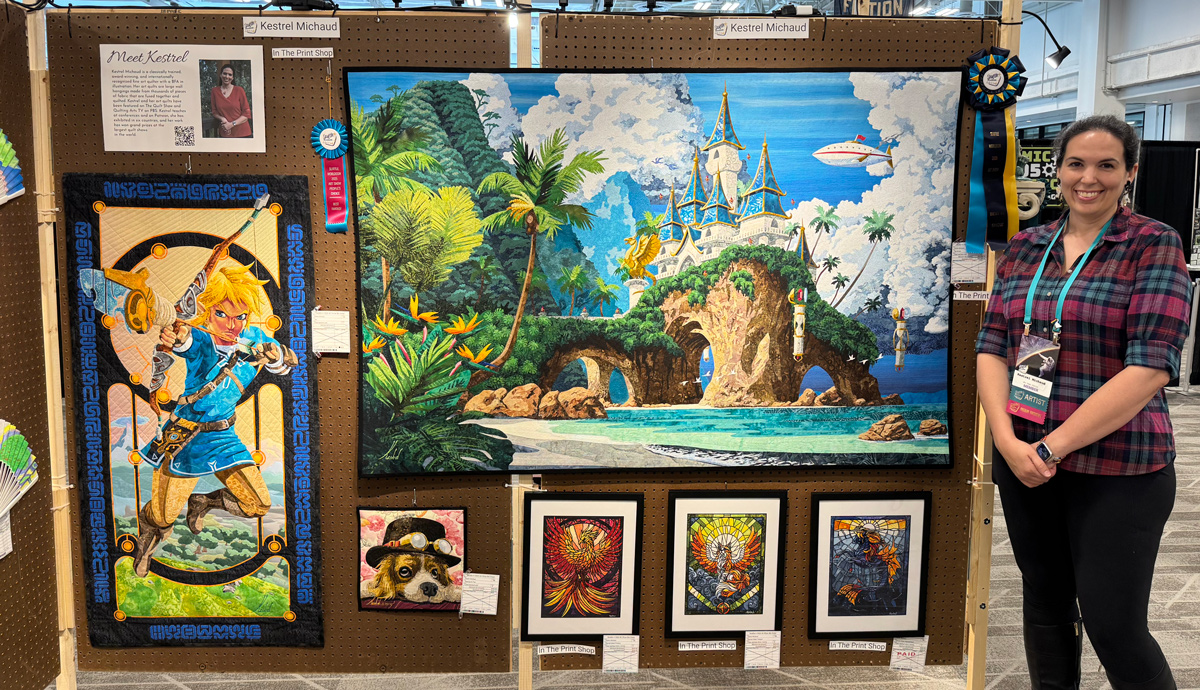Worldcon Seattle 2025
- Published:
- Length: 1104 words
- Reading Time: 6 minutes
In August 2025, Alex and I went to the World Science Fiction Convention (aka Worldcon), a fan-run convention dedicated to celebrating all things fantasy and science fiction. Worldcon is an annual convention, but it's held in a different city every year. This year, Worldcon was in Seattle, WA.
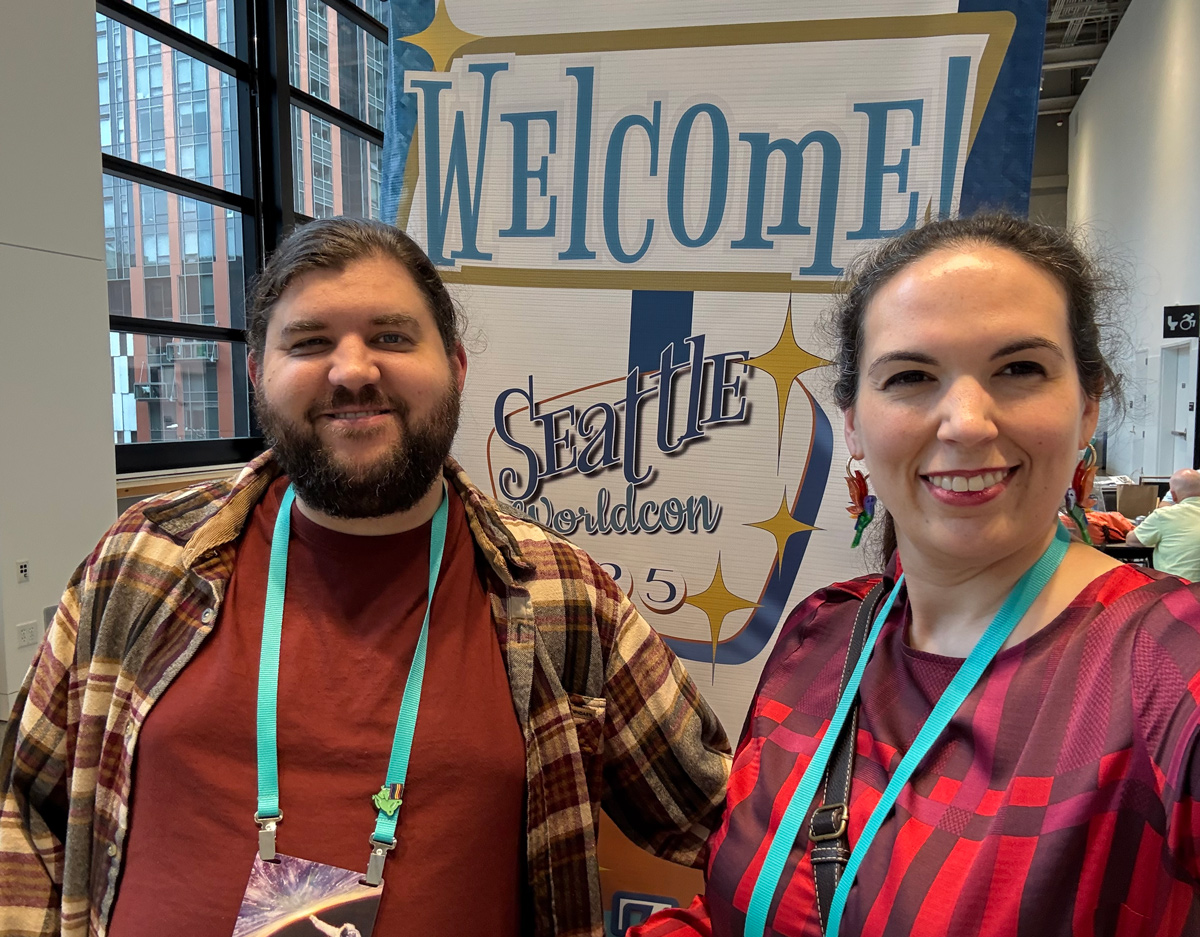
Story Time - My First Worldcon
My first Worldcon was a very formative experience. It was back in 2004 (the same year I discovered I could make pictures out of fabric) when I was 15 years old. That year, Worldcon was Noreascon 4 (which is the colloquial name given to Worldcon anytime the convention is held in Boston). I had entered the student art competition, and to my delight, I won the grand prize: two full-week tickets to the convention.
Fortunately, my parents have always been very supportive of their kids' creative endeavors, and Mom took me to Boston for the convention. It was amazing; I got the chance to meet the artists painting the covers of my favorite fantasy books, hear them talk in panels, and see their original work hanging in the art show. It was amazing, and one of the most memorable trips of my childhood.
Worldcon in Seattle, 2025
Fast forward to 2025. This year, I returned to Worldcon, this time as a panelist and art show participant. I was ecstatic to be participating in the event as a successful, artistic professional who was making a living from her fantasy work. It was a dream come true.
The Panels
I was scheduled to participate in seven panels:
- How Do You Price Your Art?
- The Art of Content Creation
- Designing Things That Don't Exist
- AI Created and Assisted Art: Threat or Menace?
- Adventures in Mixed Media
- Technology and Art
- Making a Living in a Creative Field
Each panel had three to five panelists, all creative professionals that had experience or expertise in the topic at hand. We sat at the front of the room, talked for 30-45mins, and then opened the floor to questions from the audience.
Here is a photo from the Technology and Art panel: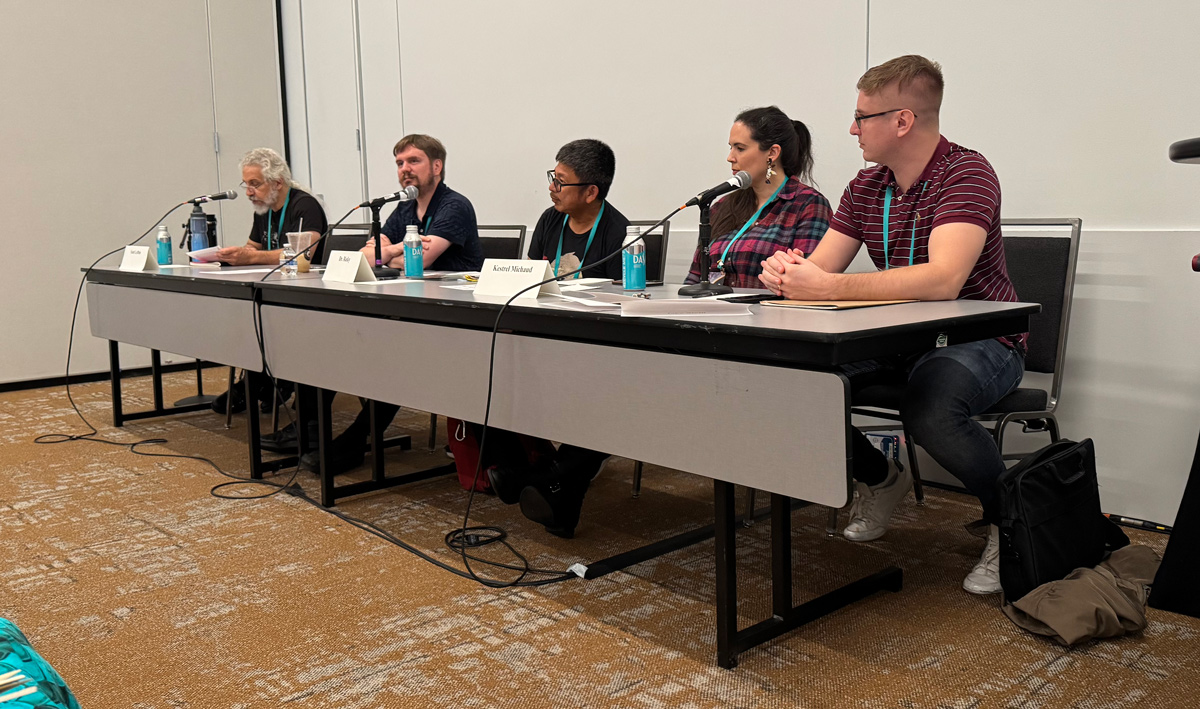
Tips for Being a Good Panelist
I learned a few things from this experience. These are things I caught myself doing or noticed other people doing, both good and bad, and feel they are worth mentioning in the interest of being a better panel participant.
- Prepare ahead of time (This means talking to the other panelists, meeting up ahead of the scheduled time to discuss, and preparing questions to prompt conversation as the moderator.)
- Keep answers/comments short and sweet (this will help use the limited amount of time effectively.)
- Do quick poll of audience to figure out attendees experience level (This can be helpful to understand what kind of answers will be most relevant to what the audience wants to learn.)
- Lay out expectations ahead of time. (Share the format of the panel—introductions, panel discussion, Q&A—with the audience at the beginning so they know what to expect.)
The Art Show
We arrived a day before the official start of the convention in order to set up my art space. I paid for two panels—a hanging area of 8' x 6'—and was responsible for setting up my own space, as well as putting my prints in the Print Shop for sale.
As it happens, I was one of the very first artists to arrive, and I snapped this photo of the mostly empty area. You can see my quilts on display toward the back of the area, almost dead center in this photo:
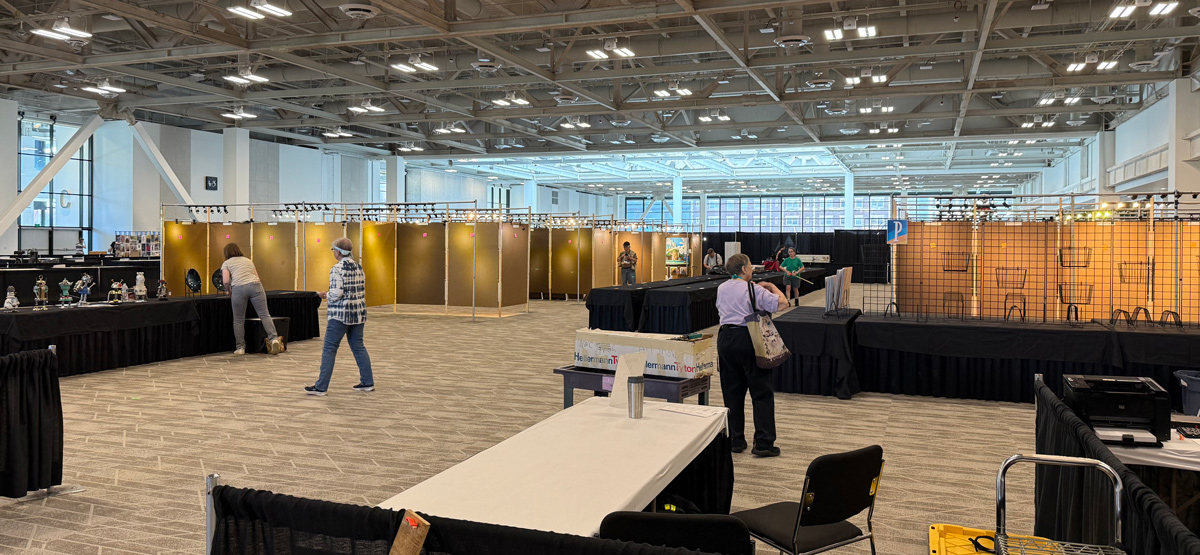
Here is how I arranged my two panels:
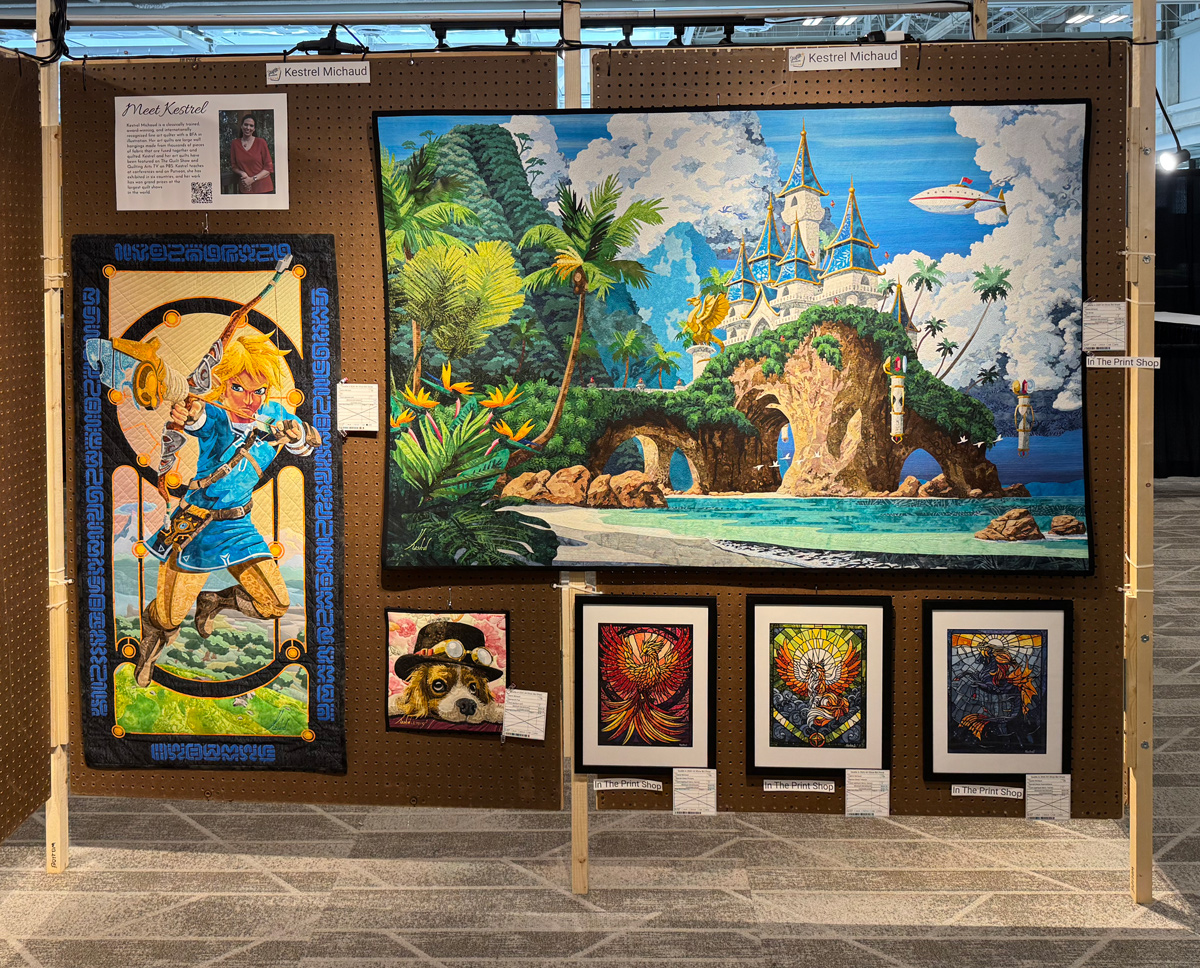
I also brought some giclée prints of The Arrival and additional originals of my stained glass artwork to have on sale in the Print Shop.
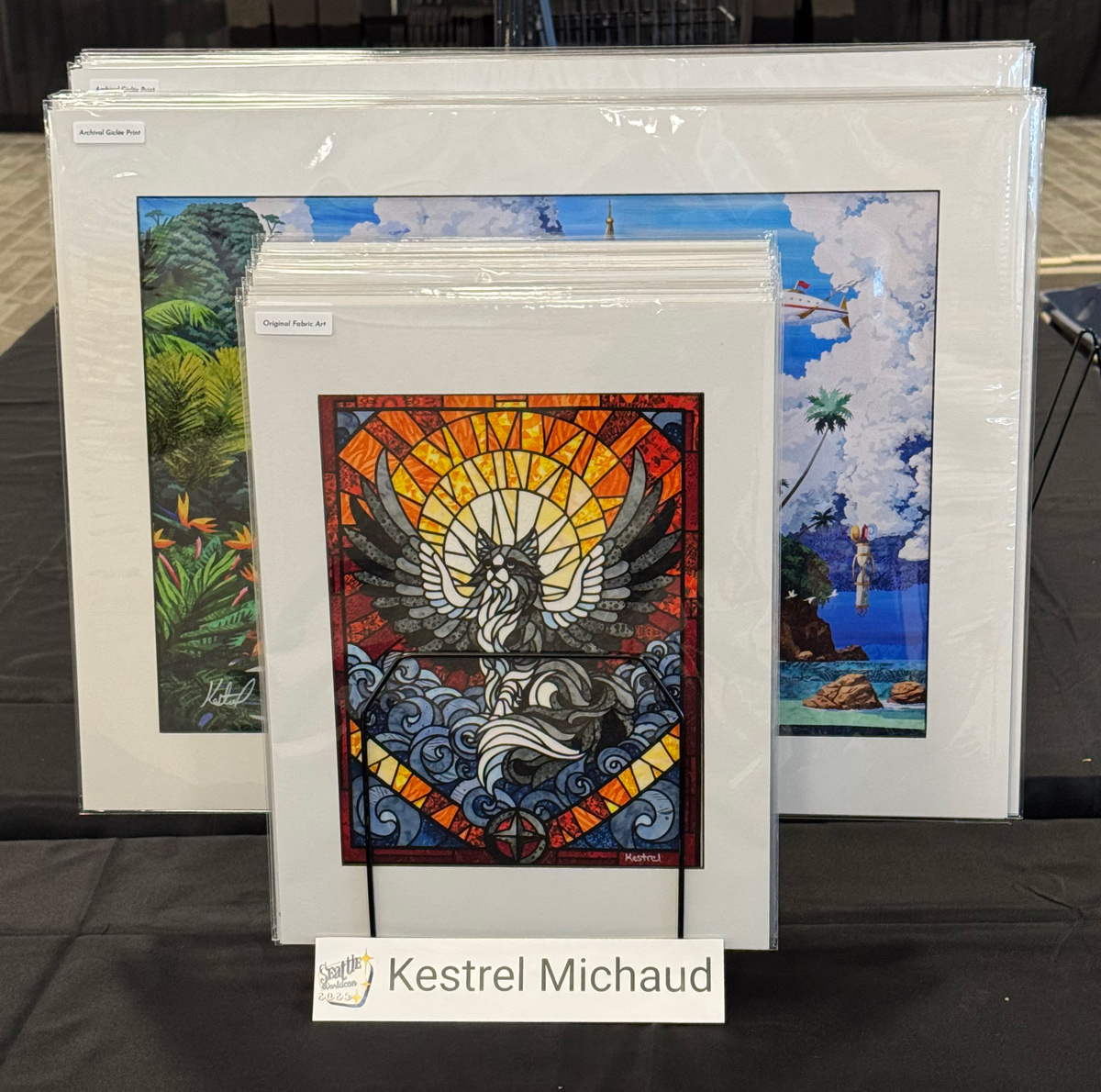
Tips for Selling and Exhibiting
As with being a panelist, there are things I learned by exhibiting in a convention atmosphere—and specifically Worldcon—for the first time. Here are some of my observations:
- $40 is a good price point; $40-$80 is an ideal range for sales
- Smaller prints are good because they travel better
- Fan art does well as attention-grabber (although at Worldcon, it was not permitted to be for sale, so I don't recommend your entire exhibit being fan art.)
- Don’t put originals in Print Shop; have tray on pegboard display & bidsheets for each. (Many people were confused when I explained I had other original stained glass artworks in the Print Shop. Having them searchable in a tray hanging somewhere on my display board would have been clearer.)
- Have tray on pegboard for business cards
- Meet Kestrel sign with QR code was good idea
- Put Prints Available on the bid sheets in lieu of bidding lines (Worldcon requires bidsheets for each artwork hanging in the show. I did not opt for any of my work to be part of the auction, so I crossed out the bid lines as instructed. However, I could have instead put a sticker covering the bid lines that said "Prints Available" for additional advertising.)
- Highlight the sale price on the bid sheets (With the bid lines crossed out, many viewers assumed my work was not for sale; this was not the case. It was available for purchse, just not as part of the auction. Highlighting the sale price would have helped clarify that the work was indeed for sale.)
- Need a big sign that says, “Look closer, it’s fabric!” (In a venue such as this, with my work being the only quilts on display, I should have remembered that people would think it was paintings, not fabric, by default. Having a big sign saying otherwise would have been great.)
Surprise, Surprise!
I did not know that attendees had the opportunity to vote on eight awards to be given to artwork hanging in the Art Show. And it turned out that my quilts made quite the impression. The Arrival was voted People's Choice Best Fantasy and People's Choice Best in Show. I was over the moon!
